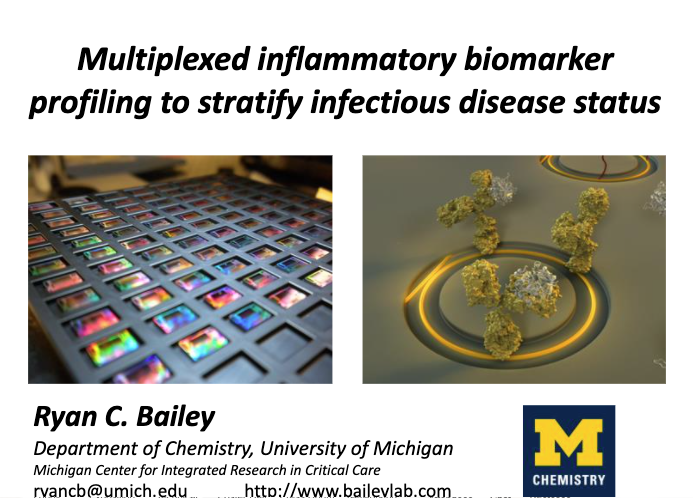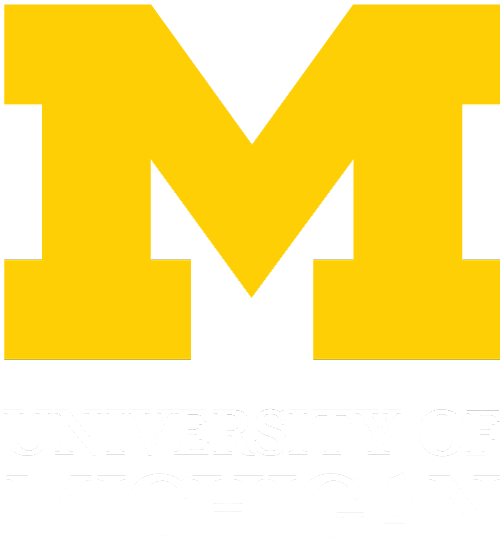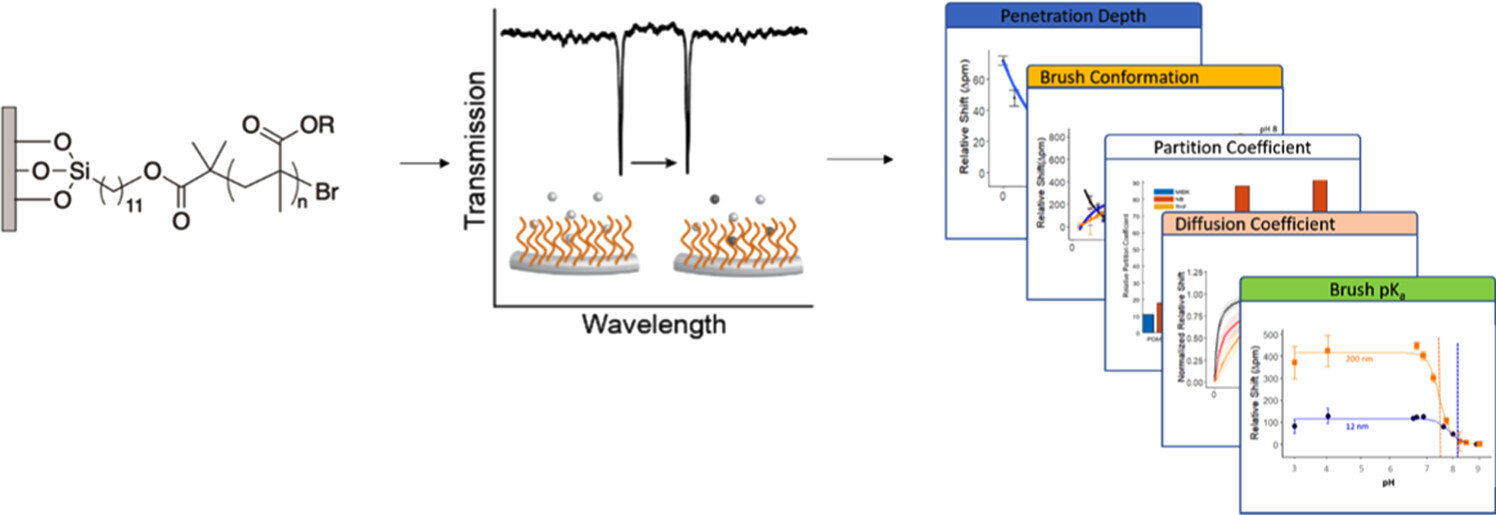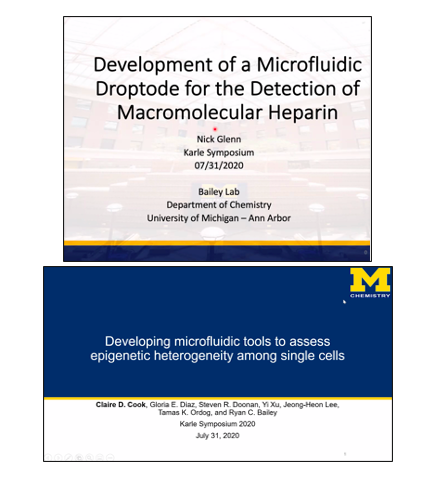The 2020 Karle Symposium was held on July 31st. While in a virtual format this year, current students, alumni, faculty and outside researchers were still given the opportunity to learn about the novel research occurring in the chemistry labs here at UM. The Karle symposium is a yearly event named for Isabella and Jerome Karle, distinguished graduates of our department, who worked together to advance X-ray crystallography methods. Jerome Karle won the Nobel Prize in 1985 for their contribution to the field.
The Bailey lab was represented at the symposium in multiple formats. Rising third year, Nick Glenn, kicked off the student talks with his presentation titled: “Development of a Microfluidic Droptode for the Detection of Macromolecular Heparin”. Later in the day, rising third year, Claire Cook, presented in the analytical cluster’s poster session with a poster titled “Developing microfluidic tools to assess epigenetic heterogeneity among single cells”. Claire received a “Student Poster Presentation Award” sponsored by Dow for her work! Rising fourth year, Gloria Diaz, served on the symposium’s organizing committee team as a chair-elect, meaning she is set to chair the event with another graduate student in 2021.
The virtual event was filled with student talks, poster sessions, a PPG plenary lecture, and a Dow plenary lecture that highlighted collaborations with labs here in the chemistry department. The day concluded with the keynote lecture by Dr. Gabe Kwong of Georgia Tech and Emory School of Medicine titled “Chemical Approaches to Synthetic Immunity”. Great work to all of those involved in the symposium, especially to our lab-mates involved, and congratulations to Claire on her poster award!














